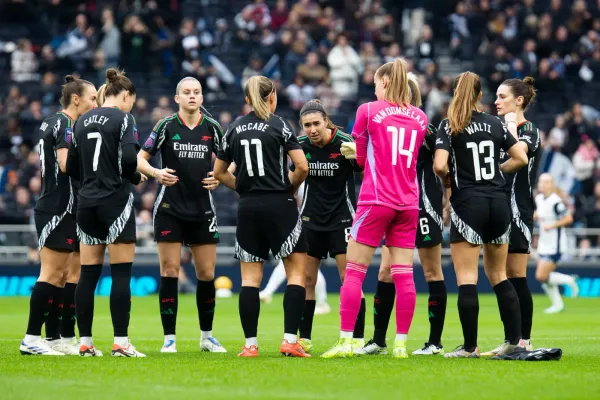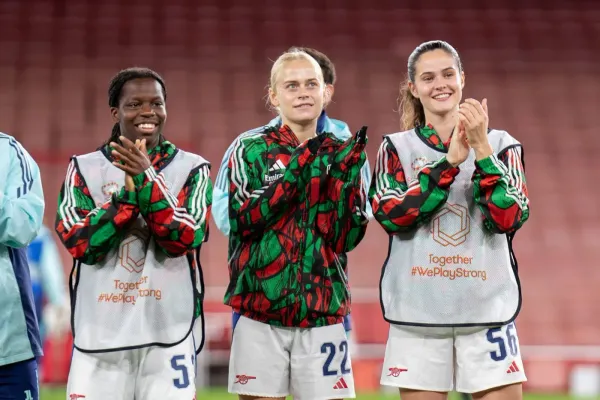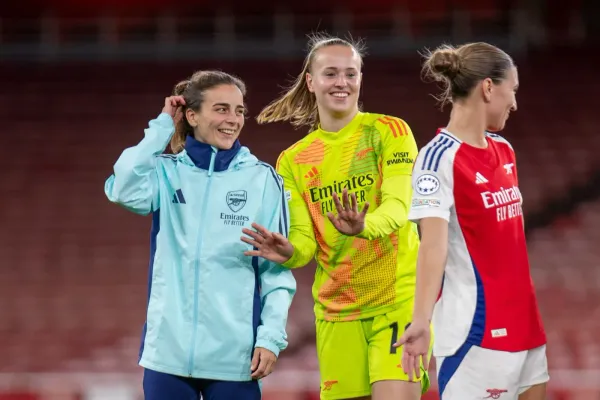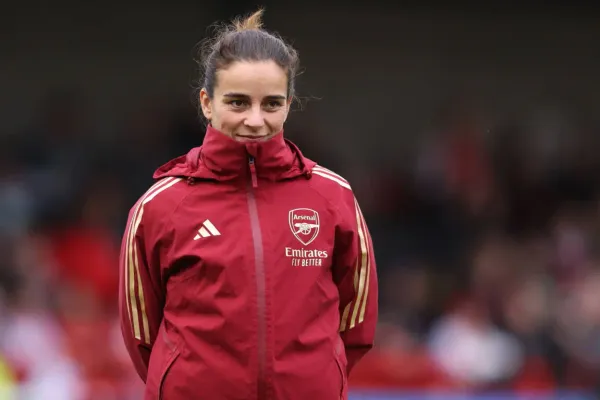Fat of the Land
How do Arsenal fix their goal scoring problems?
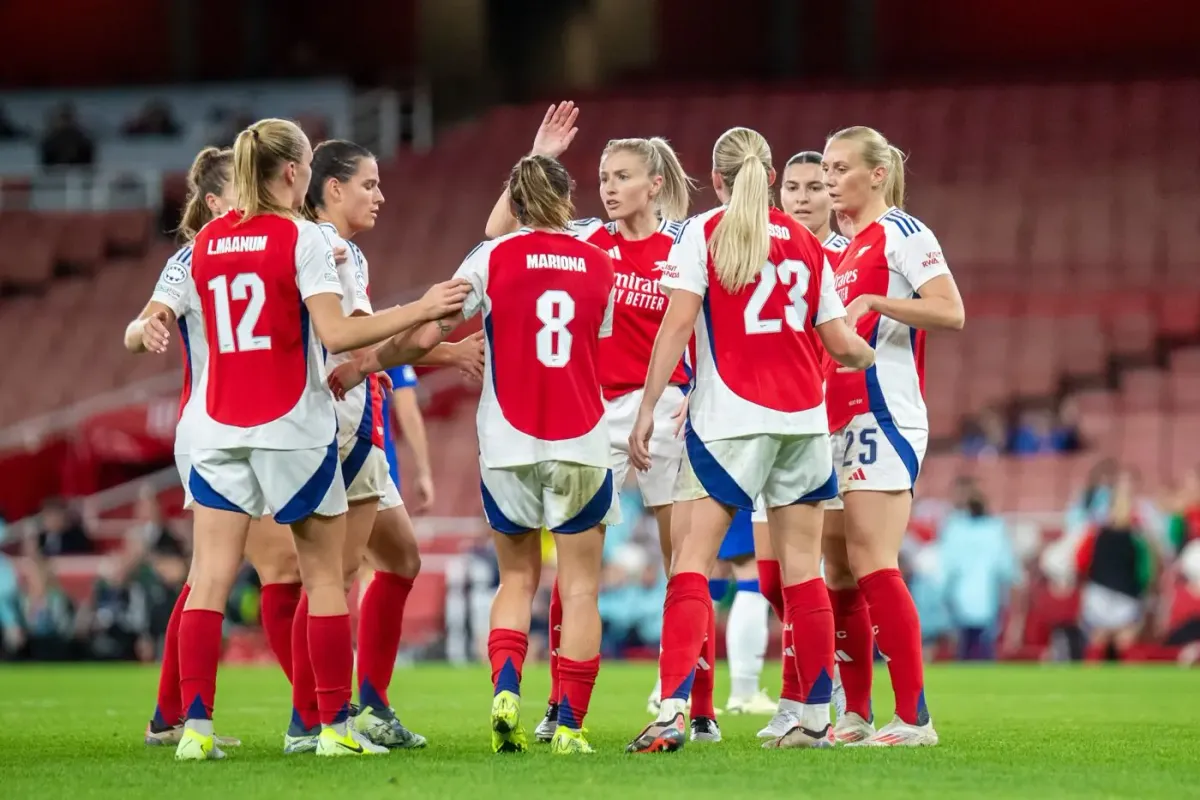
In the October 23rd edition of this newsletter I wrote about what I consider to be the top priorities for Arsenal’s next coach. Uppermost in my priorities was simply ‘goals.’ Arsenal scored 18 fewer goals than WSL champions Chelsea last season. They already trail Sonia Bompastor’s side by 13 goals with the sizeable parenthesis that Chelsea have played one game fewer and are without Sam Kerr.
Arsenal simply cannot challenge for the title in the long-term without addressing this issue. Whatever you think of the style of play under Jonas Eidevall or any wider concerns one might have had about his management, Arsenal’s expected goals (XG) was well within the range to win the WSL title last year. Last season they created 53.0XG. Chelsea created 57.9 and Manchester City 46.8. That sits them almost exactly between the two teams who were ultimately only separated by goal difference.
Currently, Arsenal’s XG for this season is 10.5, just below Chelsea’s 10.7 (who have played a game fewer) and City’s 13.2. Six games into the season there is a gap there but not an insurmountable one. But Chelsea have scored 20, City 12 and Arsenal 7. Converting pressure and shots into goals is the single biggest issue Arsenal need to solve. Renee Slegers warmed to this theme when I asked her about it after Sunday’s frustrating 1-1 draw with Manchester United (where they created 1.9XG but only scored once).
‘We are getting closer to converting more because we find better areas when we get the ball into the box, now it is about how do we time the runs? The detail on the final pass and the run, how many players do we have in the box? I think we are one step further, we get the ball into the box more often in good positions…the shots is a really good number in the WSL against a good team to get 16 shots but only four are on target according to the stats I just saw. That is not enough.’
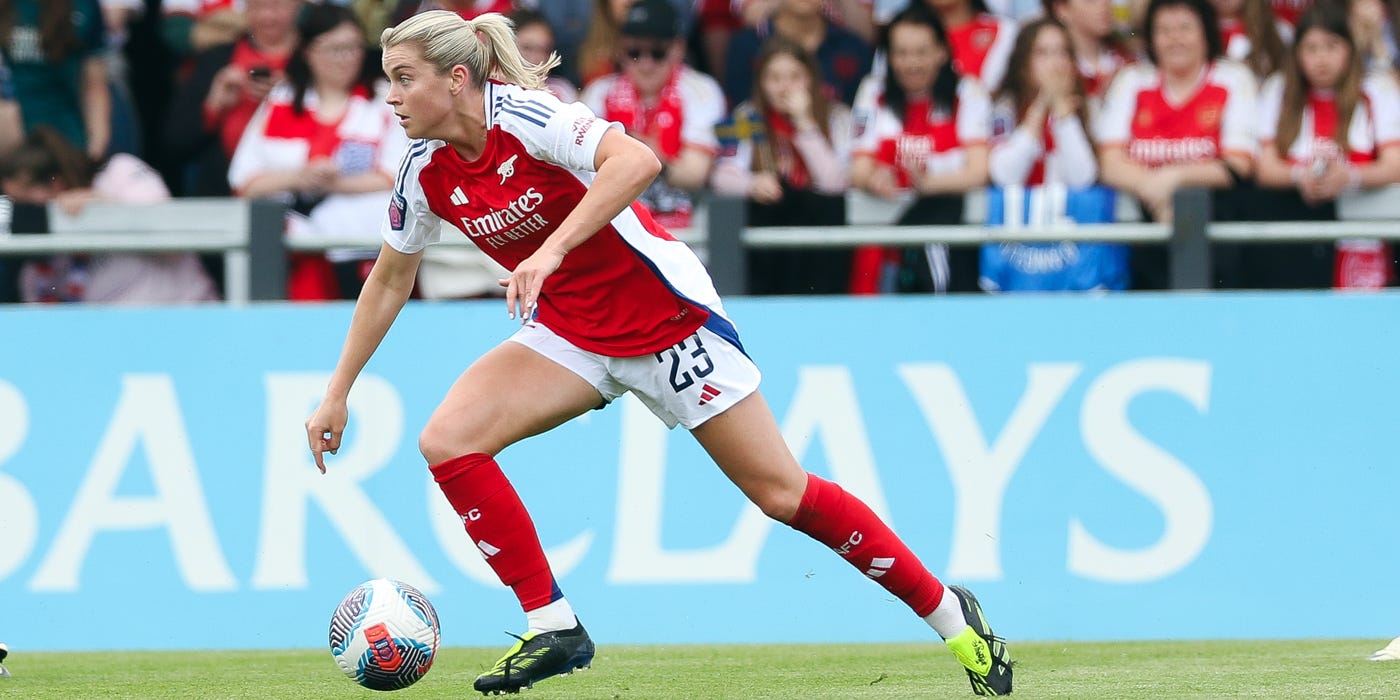
So how do Arsenal work through this persistent issue? Well, for a start, I think the new coach is going to have to work out how to get the best from Alessia Russo (whose performance against United I analysed in detail here). Russo took eight of Arsenal’s 16 shots on Sunday and she looked confident and assertive again. Russo has never really been in that 15-20 WSL goals a season bracket as a player but Arsenal pulled out the stops to sign her because they felt she had the potential to reach that range.
Last season, Russo scored 12 WSL goals, which was a good return and a strong finish to last season redoubled my personal faith that she could get to a higher level with the right coaching and the right amount of personal initiative. Arsenal have taken decisions that rely on her becoming something close to that player. It’s certainly a lot of responsibility on her and maybe that’s even a little unfair. It is also life for an elite player at an elite club.
In Sam Kerr’s absence, Chelsea have moved to more of a shared goals model (their top scorer was Lauren James last season, with one more WSL goal than Russo). Chelsea’s 20 goals so far in 2024/25 have come from 13 different players. That level of goal sharing is unsustainable, surely, but it certainly won’t level off dramatically enough to remove the impression that they have strong diversity of goal threat.
And Arsenal need to get somewhere close to that diversity of goal threat too. On the Arsenal Women Arsecast that I recorded with Jamie Spangher on Monday, Jamie made the very reasonable point that she didn’t necessarily feel as though Arsenal showed an improved attacking performance but that Alessia Russo did individually.
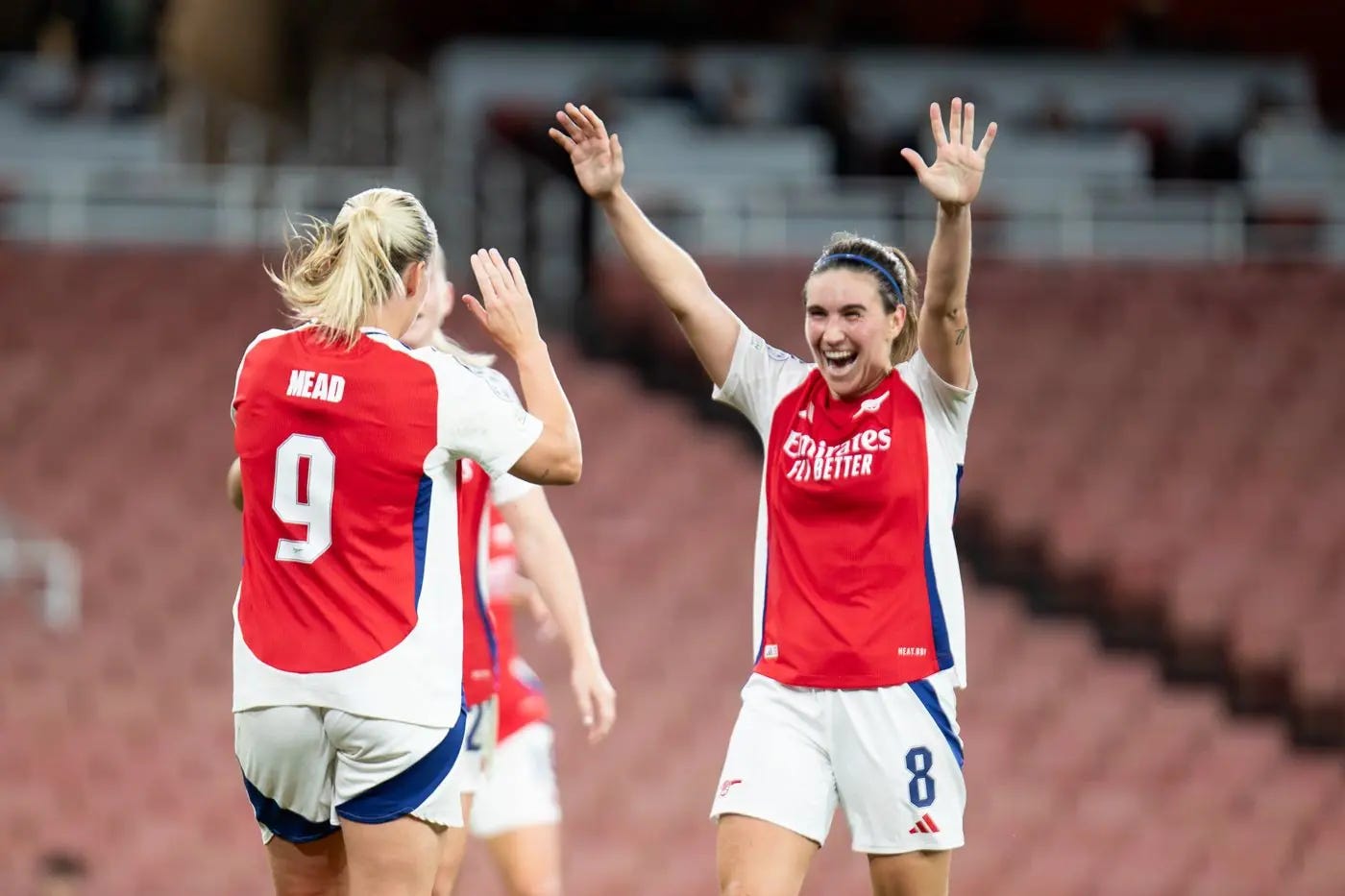
As much as the new manager needs to unlock Russo so that she consistently shows the sort of assertiveness she showed on Sunday, the framework around her needs to contribute sizeably too. Restoring Beth Mead’s best end product is another priority for Arsenal, she scored eight goals and had four assists last season, which is pretty good considering that she had just returned from an ACL injury and given Arsenal’s wider attacking issues.
But it’s short of her 11 goal eight assist haul from 2021-22 followed by winning the Golden Shoe at Euro 2022. This season so far she has one goal and no assists and has been in and out of the side. Mead on the bench would have been unthinkable a couple of seasons ago. She was good off the bench at United on Sunday but she still didn’t have a shot on goal. That isn’t the Beth Mead that we know and restoring her to the elite level in terms of goal threat will help enormously.
A couple of weeks ago I wrote about how I was unconvinced by the split striker model between Blackstenius and Russo (making a garbled comparison to the Gallagher brothers in the process). But the new coach either needs to find a way to turn Russo into a 20(ish) goal a season striker or else have Russo and Stina combined hitting the 25-30 mark. Lina Hurtig’s absences since arriving in 2022 have also robbed Arsenal of an attacker who might have been able to contribute in front of goal.
In investing in Russo, the new coach is also going to have to find the right number 10, which I don’t think ever emphatically happened under Jonas Eidevall. It doesn’t feel as though Russo has a particularly developed partnership with Frida Maanum or Mariona as yet. Maybe Rosa Kafaji can provide some of that ‘click’ in the long term.
Russo is where Arsenal put the resource and given she is coming into her prime years, putting a framework around her that both gets the best from her qualities and takes some of the goal scoring burden from her are serious priorities. Improving the return on setpieces would also make the ‘F’ column look a little healthier in the table.
But I simply don’t think Arsenal can move the needle enough here without access to the transfer market. Russo and Hurtig are strong aerially but I am struggling for more examples of aerially dominant players. At centre-half I think Arsenal probably lack this profile.
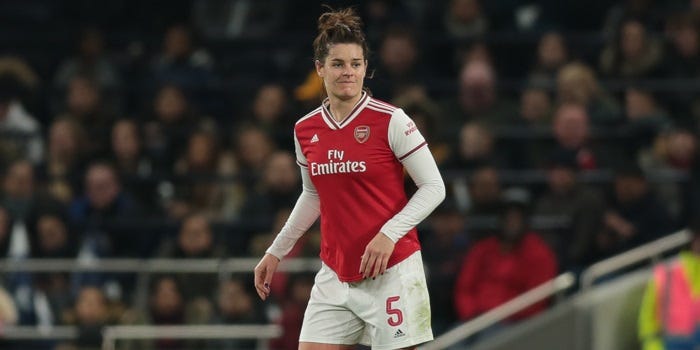
When Arsenal won the title in 2018-19, they partnered Louise Quinn with Leah Williamson, who is ok in the air but if you were listing her best attributes, aerial duels would not feature in her top five. Joe Montemurro replaced Quinn with Jen Beattie, one of the most aerially dominant players in WSL history and she was subsequently replaced by Rafaelle at centre-half, who was incredibly strong in the air. For the first half of last season, Amanda Ilestedt fulfilled this profile. In defence, Arsenal simply lack aerial dominance.
If you look at United’s equaliser on Sunday, Steph Catley and Leah Williamson are not poorly positioned for the corner at all. The delivery simply sails over the pair of them. You can’t fight genetics. Then it is left to nominative determinism’s Kim Little (in this context) to fight off Melvine Malard. The double pivot of Walti and Little (or even Cooney-Cross) do not buttress Arsenal’s aerial threat.
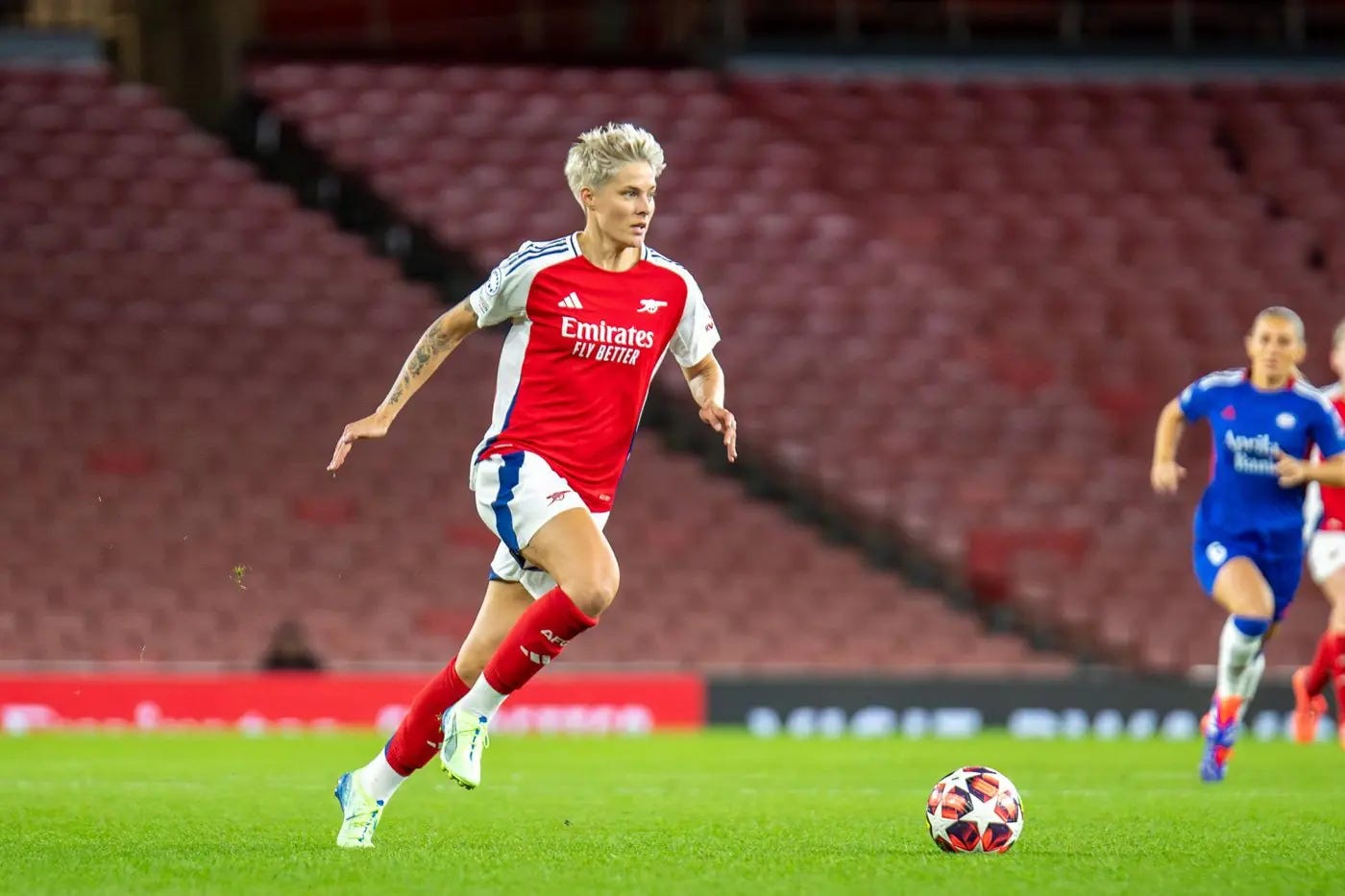
That also explains why goals from setpieces have dried up since Rafaelle and Jen Beattie left the club in 2023-24. (Again, greater availability for Lina Hurtig over the last two seasons would have surely helped here). Arsenal changed their setpiece coach from Patrik Winqvist to Chris Bradley over the summer and the results are looking very similar. You cannot build a car from wood.
Goals from central midfield would also help significantly. Last season, Kim Little scored one WSL goal, a penalty. Victoria Pelova scored twice and Lia Walti and Kyra Cooney-Cross did not score. While none of those players should be expected to hit double figures by any means, two open play goals from central midfield is not enough. Eidevall liked a solid midfield double pivot behind the ball to ‘frame the box’, collect clearances and keep opponents hemmed into their own defensive third.
However, a new coach will arrive with, probably, some new ideas and maybe a little more freedom for the midfield to slightly inflate some rookie looking numbers. Two to three more from setpieces, two to three more from central midfield, greater availability for Lina Hurtig, Beth Mead coming back into form, a more settled idea of what is expected from the ‘number 10’, Caitlin Foord scoring more often, Russo staying in touch with the penalty box killer inside. All these avenues ought to be explored by the new coach. Some of them will be more in the control of the new manager than others.

